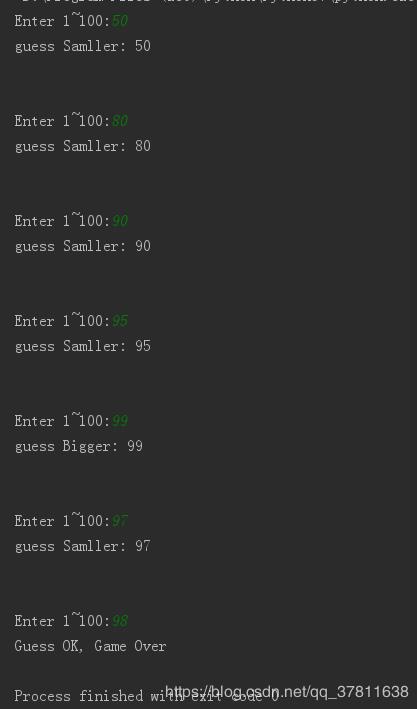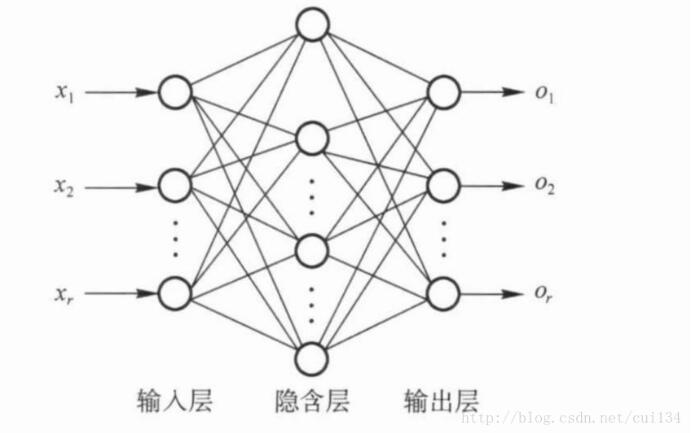TensorFLow 不同大小图片的TFrecords存取实例
全部存入一个TFrecords文件,然后读取并显示第一张。
不多写了,直接贴代码。
from PIL import Image
import numpy as np
import matplotlib.pyplot as plt
import tensorflow as tf
IMAGE_PATH = 'test/'
tfrecord_file = IMAGE_PATH + 'test.tfrecord'
writer = tf.python_io.TFRecordWriter(tfrecord_file)
def _int64_feature(value):
return tf.train.Feature(int64_list=tf.train.Int64List(value=[value]))
def _bytes_feature(value):
return tf.train.Feature(bytes_list=tf.train.BytesList(value=[value]))
def get_image_binary(filename):
""" You can read in the image using tensorflow too, but it's a drag
since you have to create graphs. It's much easier using Pillow and NumPy
"""
image = Image.open(filename)
image = np.asarray(image, np.uint8)
shape = np.array(image.shape, np.int32)
return shape, image.tobytes() # convert image to raw data bytes in the array.
def write_to_tfrecord(label, shape, binary_image, tfrecord_file):
""" This example is to write a sample to TFRecord file. If you want to write
more samples, just use a loop.
"""
# write label, shape, and image content to the TFRecord file
example = tf.train.Example(features=tf.train.Features(feature={
'label': _int64_feature(label),
'h': _int64_feature(shape[0]),
'w': _int64_feature(shape[1]),
'c': _int64_feature(shape[2]),
'image': _bytes_feature(binary_image)
}))
writer.write(example.SerializeToString())
def write_tfrecord(label, image_file, tfrecord_file):
shape, binary_image = get_image_binary(image_file)
write_to_tfrecord(label, shape, binary_image, tfrecord_file)
# print(shape)
def main():
# assume the image has the label Chihuahua, which corresponds to class number 1
label = [1,2]
image_files = [IMAGE_PATH + 'a.jpg', IMAGE_PATH + 'b.jpg']
for i in range(2):
write_tfrecord(label[i], image_files[i], tfrecord_file)
writer.close()
batch_size = 2
filename_queue = tf.train.string_input_producer([tfrecord_file])
reader = tf.TFRecordReader()
_, serialized_example = reader.read(filename_queue)
img_features = tf.parse_single_example(
serialized_example,
features={
'label': tf.FixedLenFeature([], tf.int64),
'h': tf.FixedLenFeature([], tf.int64),
'w': tf.FixedLenFeature([], tf.int64),
'c': tf.FixedLenFeature([], tf.int64),
'image': tf.FixedLenFeature([], tf.string),
})
h = tf.cast(img_features['h'], tf.int32)
w = tf.cast(img_features['w'], tf.int32)
c = tf.cast(img_features['c'], tf.int32)
image = tf.decode_raw(img_features['image'], tf.uint8)
image = tf.reshape(image, [h, w, c])
label = tf.cast(img_features['label'],tf.int32)
label = tf.reshape(label, [1])
# image = tf.image.resize_images(image, (500,500))
#image, label = tf.train.batch([image, label], batch_size= batch_size)
with tf.Session() as sess:
coord = tf.train.Coordinator()
threads = tf.train.start_queue_runners(coord=coord)
image, label=sess.run([image, label])
coord.request_stop()
coord.join(threads)
print(label)
plt.figure()
plt.imshow(image)
plt.show()
if __name__ == '__main__':
main()
全部存入一个TFrecords文件,然后按照batch_size读取,注意需要将图片变成一样大才能按照batch_size读取。
from PIL import Image
import numpy as np
import matplotlib.pyplot as plt
import tensorflow as tf
IMAGE_PATH = 'test/'
tfrecord_file = IMAGE_PATH + 'test.tfrecord'
writer = tf.python_io.TFRecordWriter(tfrecord_file)
def _int64_feature(value):
return tf.train.Feature(int64_list=tf.train.Int64List(value=[value]))
def _bytes_feature(value):
return tf.train.Feature(bytes_list=tf.train.BytesList(value=[value]))
def get_image_binary(filename):
""" You can read in the image using tensorflow too, but it's a drag
since you have to create graphs. It's much easier using Pillow and NumPy
"""
image = Image.open(filename)
image = np.asarray(image, np.uint8)
shape = np.array(image.shape, np.int32)
return shape, image.tobytes() # convert image to raw data bytes in the array.
def write_to_tfrecord(label, shape, binary_image, tfrecord_file):
""" This example is to write a sample to TFRecord file. If you want to write
more samples, just use a loop.
"""
# write label, shape, and image content to the TFRecord file
example = tf.train.Example(features=tf.train.Features(feature={
'label': _int64_feature(label),
'h': _int64_feature(shape[0]),
'w': _int64_feature(shape[1]),
'c': _int64_feature(shape[2]),
'image': _bytes_feature(binary_image)
}))
writer.write(example.SerializeToString())
def write_tfrecord(label, image_file, tfrecord_file):
shape, binary_image = get_image_binary(image_file)
write_to_tfrecord(label, shape, binary_image, tfrecord_file)
# print(shape)
def main():
# assume the image has the label Chihuahua, which corresponds to class number 1
label = [1,2]
image_files = [IMAGE_PATH + 'a.jpg', IMAGE_PATH + 'b.jpg']
for i in range(2):
write_tfrecord(label[i], image_files[i], tfrecord_file)
writer.close()
batch_size = 2
filename_queue = tf.train.string_input_producer([tfrecord_file])
reader = tf.TFRecordReader()
_, serialized_example = reader.read(filename_queue)
img_features = tf.parse_single_example(
serialized_example,
features={
'label': tf.FixedLenFeature([], tf.int64),
'h': tf.FixedLenFeature([], tf.int64),
'w': tf.FixedLenFeature([], tf.int64),
'c': tf.FixedLenFeature([], tf.int64),
'image': tf.FixedLenFeature([], tf.string),
})
h = tf.cast(img_features['h'], tf.int32)
w = tf.cast(img_features['w'], tf.int32)
c = tf.cast(img_features['c'], tf.int32)
image = tf.decode_raw(img_features['image'], tf.uint8)
image = tf.reshape(image, [h, w, c])
label = tf.cast(img_features['label'],tf.int32)
label = tf.reshape(label, [1])
image = tf.image.resize_images(image, (224,224))
image = tf.reshape(image, [224, 224, 3])
image, label = tf.train.batch([image, label], batch_size= batch_size)
with tf.Session() as sess:
coord = tf.train.Coordinator()
threads = tf.train.start_queue_runners(coord=coord)
image, label=sess.run([image, label])
coord.request_stop()
coord.join(threads)
print(image.shape)
print(label)
plt.figure()
plt.imshow(image[0,:,:,0])
plt.show()
plt.figure()
plt.imshow(image[0,:,:,1])
plt.show()
image1 = image[0,:,:,:]
print(image1.shape)
print(image1.dtype)
im = Image.fromarray(np.uint8(image1)) #参考numpy和图片的互转:http://blog.csdn.net/zywvvd/article/details/72810360
im.show()
if __name__ == '__main__':
main()
输出是
(2, 224, 224, 3) [[1] [2]] 第一张图片的三种显示(略)
封装成函数:
# -*- coding: utf-8 -*-
"""
Created on Fri Sep 8 14:38:15 2017
@author: wayne
"""
'''
本文参考了以下代码,在多个不同大小图片存取方面做了重新开发:
https://github.com/chiphuyen/stanford-tensorflow-tutorials/blob/master/examples/09_tfrecord_example.py
http://blog.csdn.net/hjxu2016/article/details/76165559
https://stackoverflow.com/questions/41921746/tensorflow-varlenfeature-vs-fixedlenfeature
https://github.com/tensorflow/tensorflow/issues/10492
后续:
-存入多个TFrecords文件的例子见
http://blog.csdn.net/xierhacker/article/details/72357651
-如何作shuffle和数据增强
string_input_producer (需要理解tf的数据流,标签队列的工作方式等等)
http://blog.csdn.net/liuchonge/article/details/73649251
'''
from PIL import Image
import numpy as np
import matplotlib.pyplot as plt
import tensorflow as tf
IMAGE_PATH = 'test/'
tfrecord_file = IMAGE_PATH + 'test.tfrecord'
writer = tf.python_io.TFRecordWriter(tfrecord_file)
def _int64_feature(value):
return tf.train.Feature(int64_list=tf.train.Int64List(value=[value]))
def _bytes_feature(value):
return tf.train.Feature(bytes_list=tf.train.BytesList(value=[value]))
def get_image_binary(filename):
""" You can read in the image using tensorflow too, but it's a drag
since you have to create graphs. It's much easier using Pillow and NumPy
"""
image = Image.open(filename)
image = np.asarray(image, np.uint8)
shape = np.array(image.shape, np.int32)
return shape, image.tobytes() # convert image to raw data bytes in the array.
def write_to_tfrecord(label, shape, binary_image, tfrecord_file):
""" This example is to write a sample to TFRecord file. If you want to write
more samples, just use a loop.
"""
# write label, shape, and image content to the TFRecord file
example = tf.train.Example(features=tf.train.Features(feature={
'label': _int64_feature(label),
'h': _int64_feature(shape[0]),
'w': _int64_feature(shape[1]),
'c': _int64_feature(shape[2]),
'image': _bytes_feature(binary_image)
}))
writer.write(example.SerializeToString())
def write_tfrecord(label, image_file, tfrecord_file):
shape, binary_image = get_image_binary(image_file)
write_to_tfrecord(label, shape, binary_image, tfrecord_file)
def read_and_decode(tfrecords_file, batch_size):
'''''read and decode tfrecord file, generate (image, label) batches
Args:
tfrecords_file: the directory of tfrecord file
batch_size: number of images in each batch
Returns:
image: 4D tensor - [batch_size, width, height, channel]
label: 1D tensor - [batch_size]
'''
# make an input queue from the tfrecord file
filename_queue = tf.train.string_input_producer([tfrecord_file])
reader = tf.TFRecordReader()
_, serialized_example = reader.read(filename_queue)
img_features = tf.parse_single_example(
serialized_example,
features={
'label': tf.FixedLenFeature([], tf.int64),
'h': tf.FixedLenFeature([], tf.int64),
'w': tf.FixedLenFeature([], tf.int64),
'c': tf.FixedLenFeature([], tf.int64),
'image': tf.FixedLenFeature([], tf.string),
})
h = tf.cast(img_features['h'], tf.int32)
w = tf.cast(img_features['w'], tf.int32)
c = tf.cast(img_features['c'], tf.int32)
image = tf.decode_raw(img_features['image'], tf.uint8)
image = tf.reshape(image, [h, w, c])
label = tf.cast(img_features['label'],tf.int32)
label = tf.reshape(label, [1])
##########################################################
# you can put data augmentation here
# distorted_image = tf.random_crop(images, [530, 530, img_channel])
# distorted_image = tf.image.random_flip_left_right(distorted_image)
# distorted_image = tf.image.random_brightness(distorted_image, max_delta=63)
# distorted_image = tf.image.random_contrast(distorted_image, lower=0.2, upper=1.8)
# distorted_image = tf.image.resize_images(distorted_image, (imagesize,imagesize))
# float_image = tf.image.per_image_standardization(distorted_image)
image = tf.image.resize_images(image, (224,224))
image = tf.reshape(image, [224, 224, 3])
#image, label = tf.train.batch([image, label], batch_size= batch_size)
image_batch, label_batch = tf.train.batch([image, label],
batch_size= batch_size,
num_threads= 64,
capacity = 2000)
return image_batch, tf.reshape(label_batch, [batch_size])
def read_tfrecord2(tfrecord_file, batch_size):
train_batch, train_label_batch = read_and_decode(tfrecord_file, batch_size)
with tf.Session() as sess:
coord = tf.train.Coordinator()
threads = tf.train.start_queue_runners(coord=coord)
train_batch, train_label_batch = sess.run([train_batch, train_label_batch])
coord.request_stop()
coord.join(threads)
return train_batch, train_label_batch
def main():
# assume the image has the label Chihuahua, which corresponds to class number 1
label = [1,2]
image_files = [IMAGE_PATH + 'a.jpg', IMAGE_PATH + 'b.jpg']
for i in range(2):
write_tfrecord(label[i], image_files[i], tfrecord_file)
writer.close()
batch_size = 2
# read_tfrecord(tfrecord_file) # 读取一个图
train_batch, train_label_batch = read_tfrecord2(tfrecord_file, batch_size)
print(train_batch.shape)
print(train_label_batch)
plt.figure()
plt.imshow(train_batch[0,:,:,0])
plt.show()
plt.figure()
plt.imshow(train_batch[0,:,:,1])
plt.show()
train_batch1 = train_batch[0,:,:,:]
print(train_batch.shape)
print(train_batch1.dtype)
im = Image.fromarray(np.uint8(train_batch1)) #参考numpy和图片的互转:http://blog.csdn.net/zywvvd/article/details/72810360
im.show()
if __name__ == '__main__':
main()
以上这篇TensorFLow 不同大小图片的TFrecords存取实例就是小编分享给大家的全部内容了,希望能给大家一个参考,也希望大家多多支持【听图阁-专注于Python设计】。



